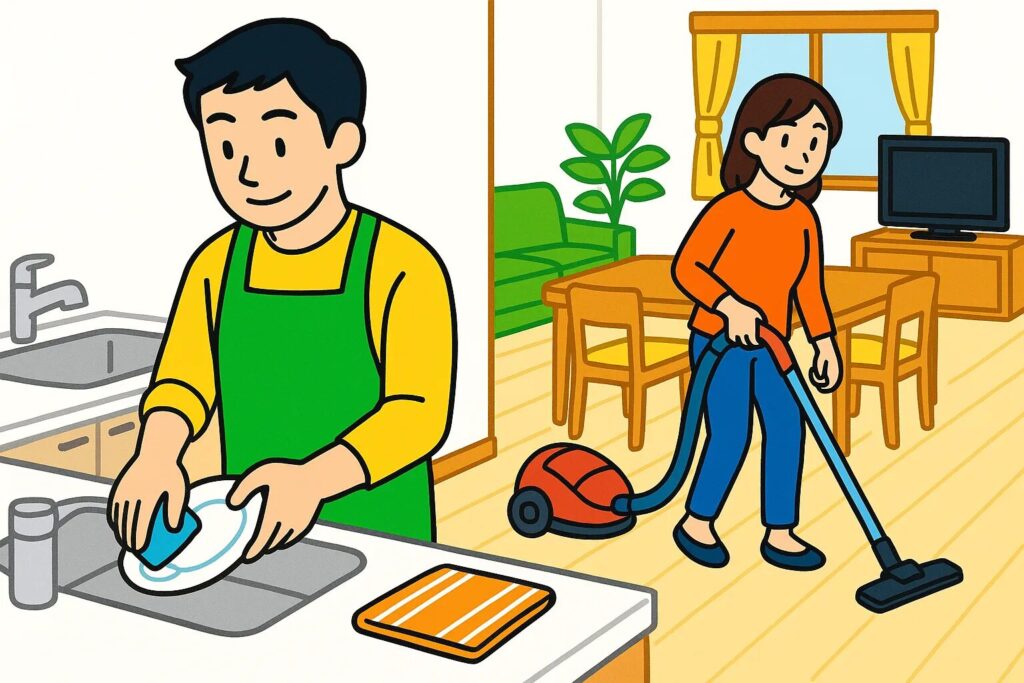1. Introduction
In Japanese households, traditional role division has persisted for a long time. While it was common for men to work outside and women to handle household chores and childcare, this style is significantly changing with the times. In this article, we’ll explore how the division of roles between couples in Japanese households is evolving, examining its background and modern family circumstances.

2. Practical Points and Specific Examples
- **”Traditional Division of Roles Between Couples”**In traditional Japan, the thinking that “men work, women tend to the home” was commonplace. Husbands worked outside to support the household finances, while wives, as full-time homemakers, took care of housework, childcare, and neighborhood relations. For example, a typical day involved preparing the husband’s lunch box in the morning, cleaning the house after seeing the children off, and having dinner ready by the time everyone returned home in the evening. This division of roles was deeply rooted as part of Japanese culture that emphasized family stability.
- **”Diversification of Role Division in Modern Households”**In contemporary Japan, dual-income households have become common, and the division of roles between couples has become more flexible. For instance, the term “Ikumen” (fathers actively involved in childcare) has become widespread, referring to husbands who take parental leave to actively care for children, and in household chores, arrangements where wives handle cooking while husbands take care of cleaning and garbage disposal are increasing. Additionally, more families are sharing responsibilities for taking children to and from school and attending school events, making gender-neutral role division more commonplace.
- **”New Household Management Utilizing External Resources”**To reduce the burden of housework and childcare, modern households are increasingly utilizing external resources. For example, more families are using housekeeping services and babysitters to reduce the couple’s workload and secure free time. They are also incorporating systems to efficiently handle household chores even on busy days by using convenient cooking appliances and delivery services. This has created more flexibility in couples’ lives and improved overall family happiness.
- **”Impact of Changing Values”**The shift in role division between couples stems from diversifying values. Particularly, as women advance in society and men become more involved in childcare, the concept of “supporting the household” has become shared by both partners. Additionally, men are increasingly valuing time spent at home, and there are more cases where active involvement in childcare and housework strengthens family bonds.
3. Points to Note and Tips for Implementation
When implementing role division, it’s important not to seek perfection. Create a system that flexibly adjusts the division according to each person’s strengths and lifestyle, avoiding concentration of burden on one party. Also, having regular discussions about role division and reviewing it as needed enables smoother household management. Furthermore, when utilizing external resources, it’s important for couples to thoroughly discuss budget and priorities to incorporate them in a mutually satisfactory way.
4. Summary and Next Actions
Japanese households are transitioning from traditional role division to flexible and equal sharing of responsibilities. Communication and cooperation between couples are essential for successful transformation. In your next couple’s discussion, try exchanging opinions about the current state and challenges of role division, and explore new household styles. Flexible and cooperative household management will be key to supporting the happiness of both the couple and the entire family.




